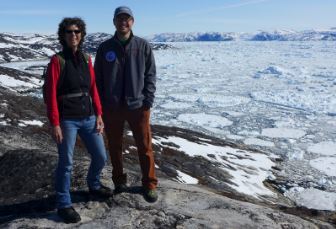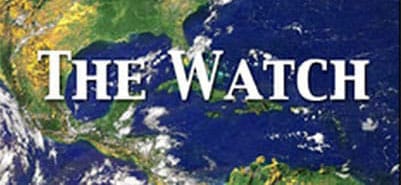Diving into Sea Level Change: It's ‘App’ropriate
Sea level change is one of the most visible connections between all our earth systems - oceans, atmosphere, ice, land, and of course life on earth – including us! Changes in sea level are measurable on both a local and a global scale providing an accessible way to connect climate to education – and there is data – lots of data! Lamont’s Polar Team has been measuring changes in the ice and oceans for decades. We have worked in a range of locations both in small motorboats with local Greenlandic fishermen to collect ocean temperature measurements up against the ice sheet, as well as from large aircrafts measuring the depth and surface changes of the ice sheet from the air. All of these measurements help us to determine changes in sea level and develop predictions and impacts for the future. We wanted to make the data available and accessible and so we have developed ‘Sea Level Rise: Polar Explorer’ an interactive map based 'app'. Developed through the PoLAR Climate Change Education Partnership at Columbia University the app offers an interactive guided tour through the many layers of science that impact sea level rise. Framed around a series of questions the app allows the user to chose their own pathway and select the level of complexity, while exploring authentic science data in an engaging and accessible way. The app reinforces the NGSS science practice of asking questions around data. Join us for this quick dive into sea level change!

Margie Turrin (mkt@ldeo.columbia.edu) is an Education Coordinator at Columbia University's Lamont-Doherty Earth Observatory where she develops and delivers a range of science education projects for all ages. She has worked extensively with polar educational initiatives trying to build connections to the public, and an understanding of the importance of these seemingly remote regions. She focuses on engaging students and the public in understanding our changing climate through looking at connections between human interactions and impacts on their environment and changes in our polar regions. She has participated in fieldwork projects in both poles - flying over the ice with instruments measuring the ice thickness below, and operating out of small boats and moving right up to the ice while collecting ocean temperature measurements. She believes that effective science education includes real data and has co-author an Association of Education Publishers award winning book “Earth Science Puzzles: Making Meaning From Data”. Tonight we will talk about the recently released app she co-developed on understanding sea level change “Polar Explorer: Sea Level”.
Dave Porter (dporter@ldeo.columbia.edu) is an Associate Research Scientist at Lamont-Doherty Earth Observatory at Columbia University and am interested in the interactions between the cryosphere and other components of the climate system. Projects include atmospheric response to sea ice decline, glacier melt due to ocean warming, gravity-inversions to recover bathymetry below floating ice, statistical analysis of glacier change in Greenland, and particle image velocimetry of sediment plumes in fjords. I have done research in both poles using tools ranging from dynamical models to on-the-ground observations. My research platforms included high-performance supercomputers, military cargo transports aircraft, small 5 m fishing skiffs, and 100 m ice breakers. I also actively participate in outreach events in the New York area, have been a panelist for several films, assist with secondary school summer programs, and develop content for the iOS App “Polar Explorer”. I’m a firm believer in the powerful interplay between research using models and observations with a strong commitment to education and outreach.
Education
Webinar Archives Education ResourcesStewardship
Supporting Stewardship Past Projects Focus Area Resources Applying for Funding
Search Education
Get Social
Last updated: 06/16/24
Author: NOAA
How to cite this article
